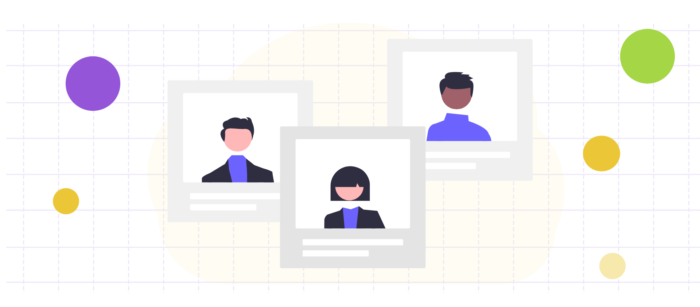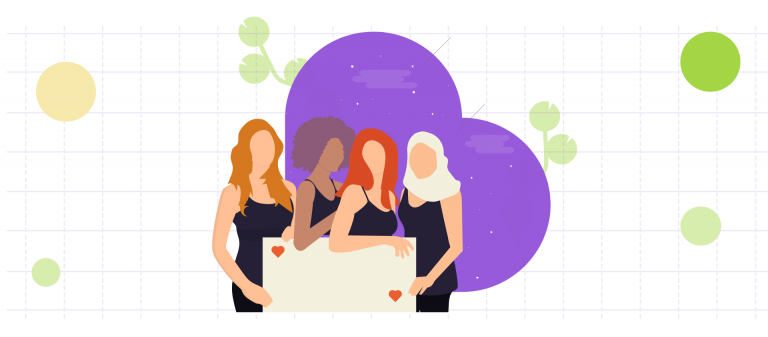How Inclusion, Equity, and Diversity Strategies Impact Fundraising

Fundraisers are the beacons of light and hope that illuminate the path to the good work needed in the world today. Philanthropists are those journeying along that path, arm-in-arm with fundraisers, battling inequity and the issues facing our society.
Yet, while many strides have been made over the past few decades, both of these groups can often lack all of the essential elements of diversity, equity, and inclusion.
I believe that people change systems and that it is individual change that informs the whole. This is why the same historical and cultural challenges that have held back Diversity, Equity, and Inclusion (DEI) in so many aspects of our personal lives are also mirrored in much of the nonprofit sector.
In the past year, we’ve seen myriad DEI commitments from the corporate sector, individuals, philanthropic entities, nonprofits themselves, as well as many other industries, yet accountability and data-backed progress is unfortunately lacking. True inclusion and equal representation of all people require overhauling both systems and ways of thinking.
While there are various acronyms for this work—ranging from DEI, EDI, EDIB, and JEDI, you name it—I believe that inclusion comes first. So, with my company and the organizations I lead, our work is called IED because an organization, company, or other entity can have all of the diversity numbers in the world, but until everyone feels included and that there is a place and voice for them, it is all for naught.
Last year amid the pandemic, I saw a gap that needed to be addressed within the nonprofit community, so I created a new community called WOC: Women of Color in Fundraising and Philanthropy. Workshops, panels, discussions, mentoring, a thriving job board, and networking are part of WOC and a sister branch, Allies in Action, for white allies to support and learn.
Understanding the role of allyship in championing equity in fundraising is also essential. Given the current racial equity movement, I received a great deal of feedback from non-people of color, asking, “What can I do to help?” For this reason, I established the Allies in Action Membership Network (AiA).
As the opening statement of AiA attests, “It is not a Black person’s responsibility to teach White people about racism.” However, there is currently too much at stake to not consider allyship. As such, I am open to allies who are sincere and genuinely ready to give up privilege to create a more just and equitable society. I am here, and WOC is here to move that effort forward.
An organization, company, or other entity can have all of the diversity numbers in the world, but until everyone feels included and that there is a place and voice for them, it is all for naught.
For nonprofit fundraisers, the lack of diversity in donor bases, fundraising teams, and leadership at the top leave organizations without a clear path to achieve equity. And instead of being seen as an integral, fully integrated part of an organization’s work, IED initiatives are often seen as separate projects that can distract from fundraising.
We must change this incorrect way of thinking to better understand the value that comes from a diversified donor base and fundraising team. Indeed, nonprofit stakeholders—from individual contributors to development leadership teams—must affirm that IED initiatives and strategies are critical for success.
Diversification of donor bases and development teams represents an incredible opportunity for nonprofit fundraisers to grow revenue and access new donor communities. And, by executing successful IED initiatives, nonprofit organizations will shift power dynamics in fundraising and create a greater leadership pipeline for team members, boards of directors, and leadership entities.
Some of the benefits of this work would likely include more diverse fundraisers and pools of donors, equal funding for organizations with diverse leadership, more voices being heard, and more “seats” at the leadership table.
6 Steps Nonprofits Can Take to Leverage Inclusion, Equity, and Diversity Strategies
The following are six steps you can take right now to begin leveraging IED strategies to drive fundraising success.
1. Change Organizational Culture
Take every opportunity to reaffirm to your fundraising teams about the importance of a diverse donor base. This can include incentive structures, remembering IED in programming, speakers, professional development, etc.
When teams are encouraged and reminded to look beyond their usual circles, new fundraising opportunities emerge. Share a framework for IED goal setting and use innovation to start small with new initiatives, track outcomes, and use agility to build success.
2. IED Benchmarking
Leverage tools that make it possible to understand the current state of the diversity makeup of your donor base. From donor data to automated marketing and even AI, nonprofit tools can help you discover patterns and trends in your database.
3. Intentional Marketing
Personalize communications based on identity to attract diversity in donors and teams. Create a strategy that prioritizes diversity based on the communities served. Leverage holidays from various cultural celebrations to engage a diverse audience year-round and remind your community that it is vital to remain inclusive, and not only in a particular month.
4. Authenticity in Diverse Donor Relations
When working towards diversifying an organization’s donor base, one important thing to remember is never to make assumptions about donors of color. We want to move away from a transactional nature to fundraising. While donor diversity may likely exceed revenue goals, it is also vital to engage donors as human beings with philanthropic priorities, gifts, talents, potentially fresh outlooks on life, and the good work to be done in the world.
In other words, think of diverse donors through a holistic lens and seek to know them entirely, instead of going directly to the nearest donor of color for your IED initiatives and stopping there. Yes, they’ll likely want to help in this area, but it is also best to gain a broader picture of who they are and give them other opportunities to support and shine as well.
5. Measure the Impact of Your IED Strategies
Most importantly, we must connect IED Strategies directly to fundraising impact through data, research, and success stories.
6. Always Bring IED to the Fore
You need not be an IED expert to prioritize and, at the very least, “bring up” the importance of not only IED initiatives but IED practices in your work. Do you notice that most of the new hires in the programming department or the organization at large are not diverse? Take a look at that and “bring it up” to the attention of those in charge of hiring to see if there’s a way to think more broadly and differently, as this could directly impact how your organization is viewed by funders, especially at the institutional level.
Even more importantly, how will your constituents view you if you are not diverse?
First things first. Take a look at your individual IED journey. Then, assess where this may align with the work of your organization. Use whatever opportunities come your way to start honest conversations around IED and what it means for your organization, with a particular focus on fundraising and donor relations, and make a plan to move this work forward.
Remember, you are shining light on the path of good work. Be proud of that, and let’s use that light to illuminate just how rich and meaningful our sector will be when we share and incorporate diverse perspectives into our work.
If you or your organization would like further information on coaching or training in this area, YFJ Consulting is here to assist, and it’s one of the proudest areas of our work in the fundraising sector. Contact Chiquita at [email protected] to learn more.
.svg)



